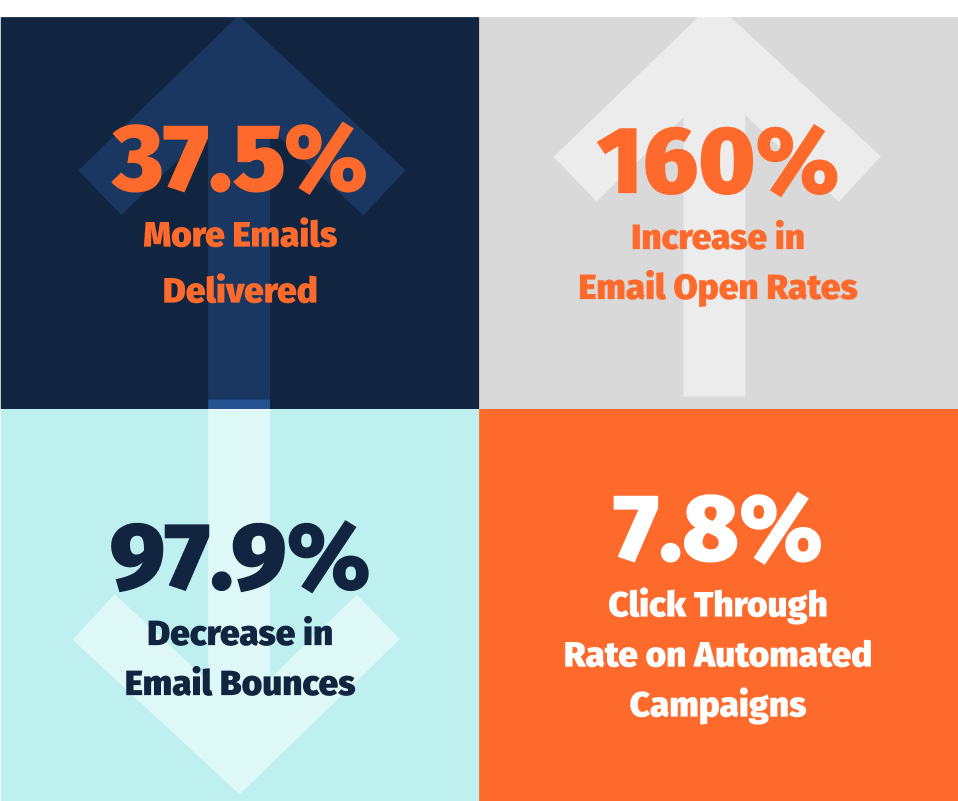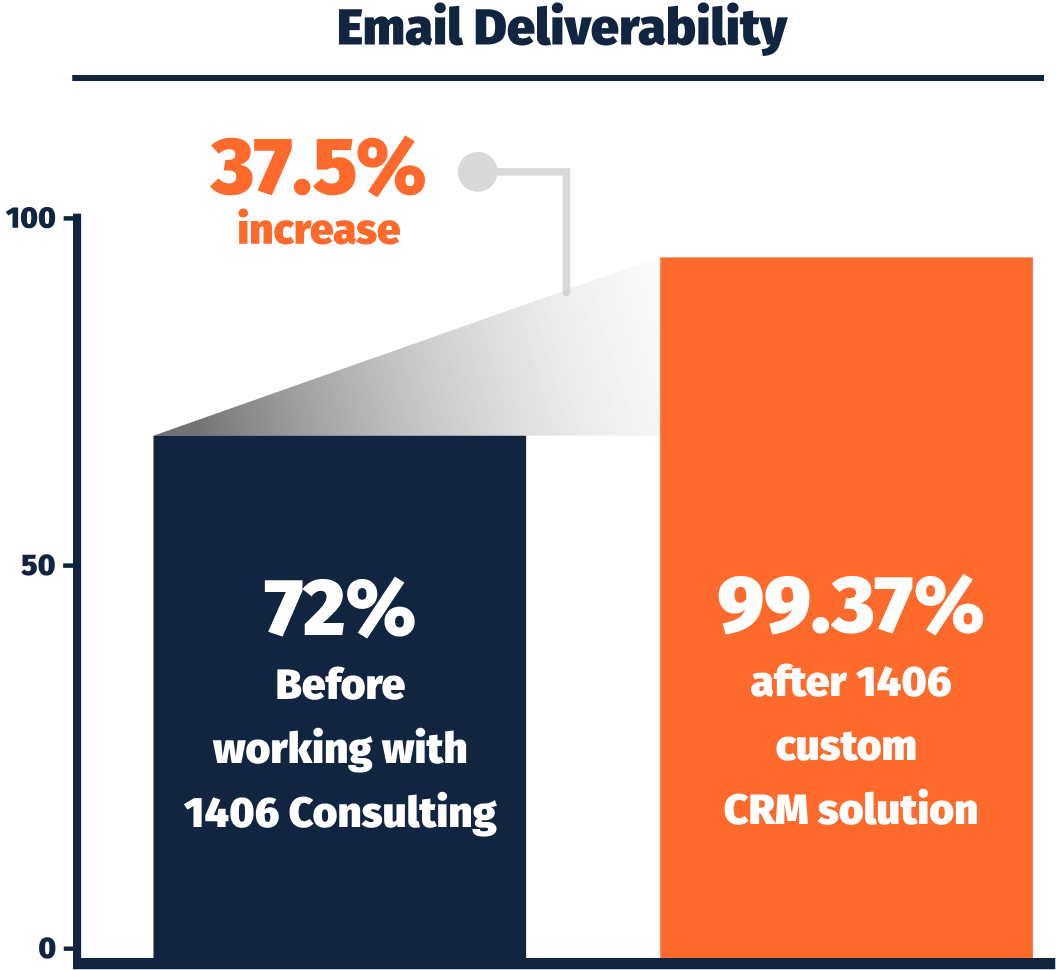CASE STUDY
Auto Dealership Group
OEM New And Used
Sales & Service
HubSpot Marketing
Company Overview
This company is a multi-location OEM auto dealer group in the Pacific Northwest, seeking to streamline marketing operations and unify customer data for more effective, targeted campaigns.
The Challenges
Fragmented Marketing Systems and Data Silos
Disconnected tools like Treasure Data, external non-HubSpot forms, and HubSpot created data gaps and prevented unified campaign execution or reporting.
High Email Bounce Rates, Poor Sender Reputation, Deliverability Issues
Inconsistent, image-heavy email templates and unvalidated contact data led to major deliverability problems, including spam flags and IP reputation damage.
Inefficient, Manual Campaign Processes
Marketing operations lacked structure — with inconsistent naming, no asset folders, and no campaign calendar — slowing launch timelines and team velocity.
Lack of Integration Between Consumer Data Platform, HubSpot, & Direct Mail
Treasure Data CPD and PostGrid weren’t fully integrated with HubSpot, leading to broken syncs, attribution blind spots, and missed cross-channel opportunities.
Limited In-House HubSpot Expertise
Teams lacked role-specific training, documentation, and confidence — limiting their ability to manage workflows, segmentation, and reporting post-implementation.
The Solutions
Audited 40+ assets to clean data, fix workflows, and restore CRM integrity, enabling accurate reporting and automation.
Custom Configuration
Created new properties, modular templates, and scalable workflows for consistent launches.
System Integration
Connected HubSpot with CDP, Kickbox, PostGrid, and ad platforms for centralized, multi-channel attribution.
Consolidated templates, automated approvals, and launched dashboards, removing bottlenecks and boosting visibility.
Training & Support
Delivered tailored training, documentation, and next-step plans, empowering teams to manage HubSpot independently.
The Results
1406 Consulting delivered a customized, deeply integrated CRM solution — one built for the complexities of a dealership group with multiple rooftops and data sources. By combining technical expertise with real-world campaign execution, 1406 empowered the internal marketing team to scale, measure, and own their digital transformation.


Summary
The unified HubSpot + Consumer Data Platform solution enabled Dick Hannah Dealerships to centralize its marketing efforts and boost operational performance.

Efficiency Gains
- Campaign launch time cut from weeks to days
- 17,000+ bad contacts removed, restoring sender reputation
- Manual list cleanup & approval delays eliminated
Performance Impact
- 37.5% more emails delivered (↑ from 72% to 99.37%)
- 160% increase in open rates
- 97.9% decrease in bounces
- 7.8% click-through rate on automated campaigns
Strategic alignment
- Single source of truth for all departments
- Campaigns are more targeted, measurable, and effective
- The dealership group is positioned as a digital leader in automotive retail





.png?width=100&height=100&name=meeting%20(1).png)